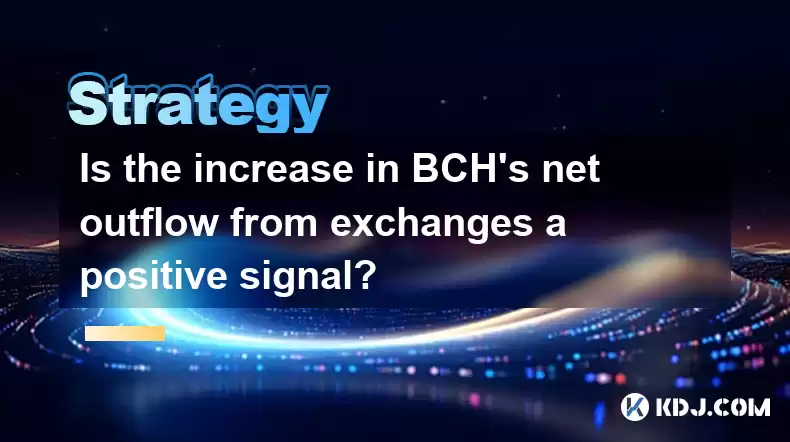-
 Bitcoin
Bitcoin $114200
0.00% -
 Ethereum
Ethereum $3637
0.56% -
 XRP
XRP $2.950
-2.01% -
 Tether USDt
Tether USDt $0.9999
0.02% -
 BNB
BNB $761.0
0.55% -
 Solana
Solana $164.1
-1.38% -
 USDC
USDC $0.9999
0.02% -
 TRON
TRON $0.3332
0.36% -
 Dogecoin
Dogecoin $0.2012
-0.52% -
 Cardano
Cardano $0.7261
-1.41% -
 Hyperliquid
Hyperliquid $37.62
-2.13% -
 Stellar
Stellar $0.3930
-2.65% -
 Sui
Sui $3.441
-0.16% -
 Bitcoin Cash
Bitcoin Cash $563.8
0.70% -
 Chainlink
Chainlink $16.50
0.09% -
 Hedera
Hedera $0.2424
-0.14% -
 Ethena USDe
Ethena USDe $1.001
0.01% -
 Avalanche
Avalanche $22.20
0.00% -
 Litecoin
Litecoin $118.0
-2.48% -
 UNUS SED LEO
UNUS SED LEO $8.991
0.12% -
 Toncoin
Toncoin $3.195
-3.87% -
 Shiba Inu
Shiba Inu $0.00001217
0.12% -
 Uniswap
Uniswap $9.674
-0.21% -
 Polkadot
Polkadot $3.633
1.00% -
 Monero
Monero $295.3
-0.82% -
 Dai
Dai $0.9999
0.00% -
 Bitget Token
Bitget Token $4.321
-0.41% -
 Cronos
Cronos $0.1392
0.73% -
 Pepe
Pepe $0.00001027
-0.89% -
 Aave
Aave $258.5
0.32%
Is the increase in BCH's net outflow from exchanges a positive signal?
The recent increase in BCH's net outflow from exchanges suggests growing investor confidence, potentially reducing selling pressure and signaling long-term value belief.
Apr 22, 2025 at 10:07 pm

The recent increase in Bitcoin Cash (BCH)'s net outflow from exchanges has sparked a debate within the cryptocurrency community about its implications. Understanding the net outflow of a cryptocurrency from exchanges can provide valuable insights into market sentiment and potential price movements. In this article, we will explore whether the increase in BCH's net outflow from exchanges is indeed a positive signal for the cryptocurrency.
What is Net Outflow from Exchanges?
Net outflow from exchanges refers to the difference between the amount of a cryptocurrency being withdrawn from exchanges and the amount being deposited into them. When more BCH is withdrawn than deposited, it results in a net outflow. This metric is often used by investors and analysts to gauge the behavior of holders and potential future price movements.
Why Do Investors Withdraw Cryptocurrency from Exchanges?
Investors may withdraw their BCH from exchanges for several reasons. One common reason is to move their assets to cold storage, which is considered more secure than leaving funds on an exchange. Another reason could be to hold onto their BCH in anticipation of a price increase, a strategy known as "HODLing." Additionally, withdrawals can occur when investors are planning to use their BCH for transactions or other purposes outside of trading.
Analyzing the Increase in BCH's Net Outflow
The recent increase in BCH's net outflow from exchanges suggests that more investors are choosing to move their BCH off exchanges. This could be interpreted as a sign of increased confidence in BCH's long-term value. When investors withdraw their cryptocurrency from exchanges, it often indicates that they are less interested in selling in the short term and more focused on holding for potential future gains.
Historical Context and Comparisons
To better understand the significance of the current increase in BCH's net outflow, it's helpful to look at historical data and compare it to other cryptocurrencies. Historically, periods of increased net outflow have often preceded price increases for various cryptocurrencies. For instance, significant net outflows of Bitcoin (BTC) have sometimes been followed by bullish market trends. By comparing BCH's current net outflow trends to those of other cryptocurrencies, we can gain a more nuanced understanding of its potential impact.
Potential Positive Implications of Increased Net Outflow
The increase in BCH's net outflow from exchanges can have several positive implications. Firstly, it can reduce the immediate selling pressure on BCH, as fewer coins are available on exchanges for trading. This reduced selling pressure can potentially lead to a more stable or increasing price. Secondly, a higher net outflow can signal a growing belief in BCH's long-term value among investors, which can attract more attention and investment to the cryptocurrency.
Potential Negative Implications of Increased Net Outflow
While the increase in BCH's net outflow is generally seen as a positive signal, it's important to consider potential negative implications as well. If the net outflow is driven by investors moving their BCH to more secure storage due to concerns about exchange security, it may not necessarily reflect bullish sentiment. Additionally, if the net outflow is accompanied by a decrease in trading volume, it could indicate a lack of liquidity and interest in BCH, which could be detrimental to its price.
Market Sentiment and Investor Behavior
The increase in BCH's net outflow from exchanges can be seen as a reflection of broader market sentiment and investor behavior. When investors feel optimistic about a cryptocurrency's future, they are more likely to withdraw it from exchanges and hold onto it. This behavior can be influenced by various factors, including news and developments within the BCH ecosystem, broader market trends, and macroeconomic factors.
Technical Analysis and On-Chain Metrics
To further assess the impact of the increased net outflow, it's useful to consider technical analysis and on-chain metrics. Technical indicators such as moving averages and relative strength index (RSI) can provide additional insights into BCH's price trends. On-chain metrics, such as the number of active addresses and transaction volume, can also offer valuable information about the health and activity of the BCH network.
Case Studies of Similar Cryptocurrency Movements
Examining case studies of similar movements in other cryptocurrencies can provide valuable context for understanding the increase in BCH's net outflow. For example, when Ethereum (ETH) experienced significant net outflows in the past, it was often followed by periods of price appreciation. By studying these case studies, we can draw parallels and gain a deeper understanding of the potential outcomes for BCH.
The Role of Market Manipulation
It's important to consider the role of market manipulation when analyzing the increase in BCH's net outflow. Some investors may engage in tactics such as "wash trading" or "pump and dump" schemes, which can artificially inflate net outflow figures. Understanding these potential manipulations can help investors make more informed decisions and avoid falling victim to misleading signals.
The Impact of Regulatory Developments
Regulatory developments can also play a significant role in influencing the net outflow of cryptocurrencies from exchanges. Changes in regulations or enforcement actions can prompt investors to move their assets to more secure locations. For BCH, any regulatory news or developments within the cryptocurrency space could impact the net outflow and should be closely monitored by investors.
Frequently Asked Questions
Q: How can I track the net outflow of BCH from exchanges?
A: To track the net outflow of BCH from exchanges, you can use various blockchain analytics platforms such as Glassnode, CryptoQuant, or CoinMetrics. These platforms provide detailed on-chain data and metrics, including net outflow figures for BCH and other cryptocurrencies. Simply navigate to the BCH section on these platforms, and you will find the relevant data.
Q: Can the increase in BCH's net outflow be influenced by whale activity?
A: Yes, the increase in BCH's net outflow can be influenced by whale activity. Large holders, or "whales," have the ability to move significant amounts of BCH off exchanges, which can impact the net outflow figures. Monitoring the movements of these large holders can provide additional insights into the market dynamics affecting BCH.
Q: Is there a correlation between BCH's net outflow and its hash rate?
A: There can be a correlation between BCH's net outflow and its hash rate, although it is not always direct. An increase in net outflow might indicate growing confidence in BCH, which could attract more miners to the network and increase the hash rate. Conversely, a decrease in hash rate could lead to concerns about the network's security, prompting more investors to move their BCH off exchanges.
Q: How does the increase in BCH's net outflow affect its volatility?
A: The increase in BCH's net outflow can potentially reduce its volatility. When more BCH is moved off exchanges, there is less immediate selling pressure, which can lead to more stable price movements. However, other factors such as trading volume and market sentiment can also influence BCH's volatility, so it's important to consider these elements as well.
Disclaimer:info@kdj.com
The information provided is not trading advice. kdj.com does not assume any responsibility for any investments made based on the information provided in this article. Cryptocurrencies are highly volatile and it is highly recommended that you invest with caution after thorough research!
If you believe that the content used on this website infringes your copyright, please contact us immediately (info@kdj.com) and we will delete it promptly.
- Binance, CZ, and the FTX Fallout: The $1.8 Billion Question
- 2025-08-06 18:30:12
- Brendan Rodgers, Celtic, and the Greg Taylor Role: A Tactical Conundrum
- 2025-08-06 18:50:12
- Coinbase Stock, Investment, and Earnings: Navigating Crypto's Tides
- 2025-08-06 18:55:54
- DALPY Coin: Investor Buzz Swirls Around Upcoming 'Game-Changing' Features
- 2025-08-06 18:30:12
- BlockchainFX: Your Ticket to 1000x Crypto Gains in '25?
- 2025-08-06 19:30:12
- Dogecoin Price, Technical Indicators, and Trader Sentiment: A NYC Perspective
- 2025-08-06 19:35:12
Related knowledge

How to avoid common crypto investment mistakes?
Jul 13,2025 at 01:35am
Understanding the Risks of Crypto InvestmentInvesting in cryptocurrency can be highly rewarding, but it also comes with significant risks. One of the ...

What is a long-short crypto strategy?
Jul 15,2025 at 10:56am
Understanding the Basics of a Long-Short Crypto StrategyA long-short crypto strategy is an investment approach where traders simultaneously take long ...

What is a long-short crypto strategy?
Jul 11,2025 at 01:28pm
Understanding the Basics of Long-Short Crypto StrategyA long-short crypto strategy is an investment approach where traders take both long and short po...

How to use the RSI indicator for crypto?
Jul 12,2025 at 03:56pm
Understanding the RSI Indicator in Cryptocurrency TradingThe Relative Strength Index (RSI) is a momentum oscillator used to measure the speed and chan...

Is copy trading a good strategy for crypto beginners?
Jul 12,2025 at 08:28am
Understanding Copy Trading in the Cryptocurrency MarketCopy trading is a strategy where novice traders replicate the trades of experienced investors a...

How to build a crypto portfolio with $1000?
Jul 13,2025 at 08:14pm
Understanding the Basics of Cryptocurrency InvestmentBuilding a crypto portfolio with $1000 starts with understanding the fundamentals of cryptocurren...

How to avoid common crypto investment mistakes?
Jul 13,2025 at 01:35am
Understanding the Risks of Crypto InvestmentInvesting in cryptocurrency can be highly rewarding, but it also comes with significant risks. One of the ...

What is a long-short crypto strategy?
Jul 15,2025 at 10:56am
Understanding the Basics of a Long-Short Crypto StrategyA long-short crypto strategy is an investment approach where traders simultaneously take long ...

What is a long-short crypto strategy?
Jul 11,2025 at 01:28pm
Understanding the Basics of Long-Short Crypto StrategyA long-short crypto strategy is an investment approach where traders take both long and short po...

How to use the RSI indicator for crypto?
Jul 12,2025 at 03:56pm
Understanding the RSI Indicator in Cryptocurrency TradingThe Relative Strength Index (RSI) is a momentum oscillator used to measure the speed and chan...

Is copy trading a good strategy for crypto beginners?
Jul 12,2025 at 08:28am
Understanding Copy Trading in the Cryptocurrency MarketCopy trading is a strategy where novice traders replicate the trades of experienced investors a...

How to build a crypto portfolio with $1000?
Jul 13,2025 at 08:14pm
Understanding the Basics of Cryptocurrency InvestmentBuilding a crypto portfolio with $1000 starts with understanding the fundamentals of cryptocurren...
See all articles

























































































